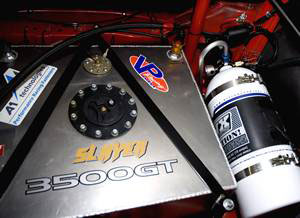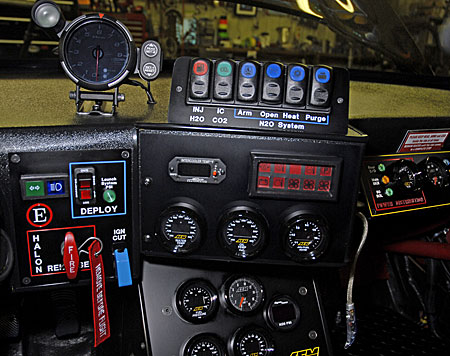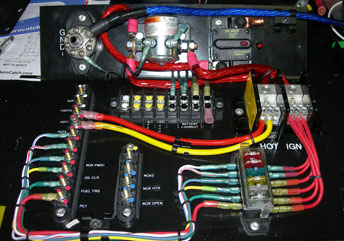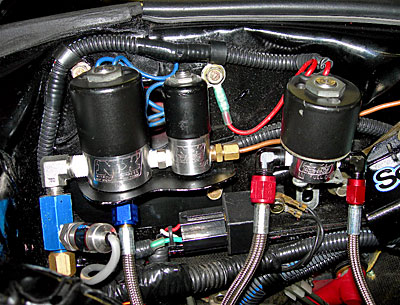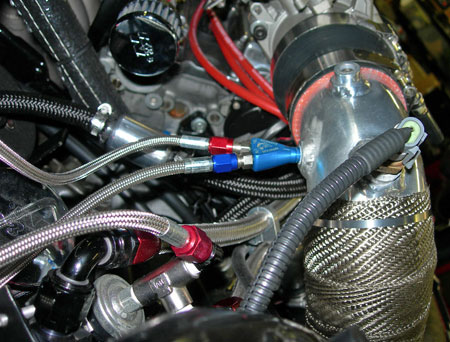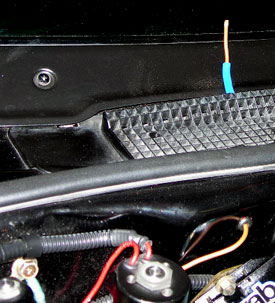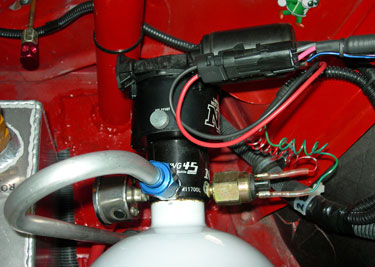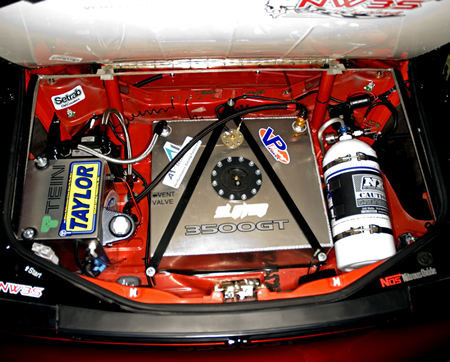|
|
||||||||||||||||
|
The NW3S 3000GT race car has a complete nitrous oxide system. Sometimes called NOS or just 'nitrous', nitrous oxide is an oxidizer that allows for the introduction of more fuel into the engine. The chemical formula for nitrous oxide is NO2. This is also the same as the 'laughing gas' at your dentist except it also has sulpher dioxide added so it is not abused (it would make you sick). It is a colorless and non-flammable gas. Currently we do not engage / turnon the nitrous system in the car. We have been able to put out some top horsepower numbers without it and also it takes additional time to safely tune your engine with it. Our last dyno session we almost went forward to go ahead and tune in the NO2 system but late in the day and tired we left it for another day. We use what is called a 'wet system' which means the nitrous system injects added fuel along with the nitrous oxide. By being able to increase the oxygen (NO2 is an oxidizer) you can add more fuel. By adding more fuel you increase horsepower. That's the basics. You then add by what's called by many as "shots" such as a "100 shot" meaning a 100HP (horsepower) increase. Nitrous oxide systems flow liquid NO2 not gaseous. |
Nitrous oxide tank in the trunk. We use Nitrous Express brand equipment. No specific reason except it is reliable and high quality and we had much of it in house already. DEI also makes several very nice nitrous systems and we highly recommend them. If I were to buy a system today I would choose the DEI "nytrex". |
Besides the control switches shown above (the blue rockers) there is also a gauge lower down to the right of the EGT and boost gauge. This shows the nitrous oxide (NO2) bottle pressure. Bottle pressure is a very important parameter to monitor when using a nitrous oxide system on your engine. |
On the left is a series of control switches for the nitrous system (the top rockers that are BLUE). One is to arm the system (ie- power up), the next is to open (or close) the bottle remotely with the motorized on/off head on the bottle in the trunk. Then there is the heat switch to turn on the bottle heater/blanket. It is important to keep a constant pressure in the tank and having a heater blanket helps achieve that. Finally, the far right blue switch is the 'purge' switch for making sure any air trapped in the lines is cleared out. The purge line (not shown) is just behind the hood by the windshied which is a common place for purge lines. |
|
The control solenoids (one for fuel - red, one for nitrous - blue, and one for purge) are mounted on the firewall as seen below. Also shown is the fuel tap from the cars fuel system along with a pressure safety sensor for the nitrous system to prevent nitrous flow without the proper fuel pressure present in the system (for safety to the engine).
On the right you see the 'shark nozzle' which is where the nitrous oxide (blue line) and extra fuel (red line) is injected into the intake right before the throttle body. This is also where the 'pills' are installed which are small brass restrictors that control the amount of fuel or nitrous by changing the orfice size of the insert. You can also see the safety pressure valve again on the right that prevents any flow or solenoid action in the event of loss of fuel pressure. |
|
On the top right is a photo of the nitrous oxide tank head. It shows the automatic 12v on/off control (you can turn the tank on or off from the driver seat), the pressure monitoring switch (has the green/red wires to it) that works with the heater/blanket to maintain the exact desired tank pressure. The blowoff valve connects to the blowdown tube shown with the 180 degree bend and going through the floor to the outside ground. The tube and the blow off valve on the tank are an NHRA track requirement. Also on the bottle but not visible in the photo is a pressure gauge (left side of tank). The tank shown here is a steel 10 pound nitrous tank.
Here is a larger shot showing the tank in the entire trunk view. You can see the heater wrapped around the tank (the black part in the enter of the tank) which maintains the desired pressure by turning on/off as needed to heat the tank. The tank is elevated in front as all nitrous oxide tanks because the NO2 system uses LIQUID nitrous oxide. So the tank has a pickup tube inside it that draws freom the bottom of the tank at an angle to draw the liquid rather than gas. |
|
| That's all there is for the nitrous oxide system. Pretty straight-forward. |
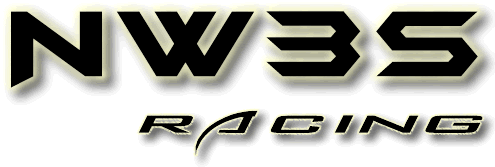 |
|


